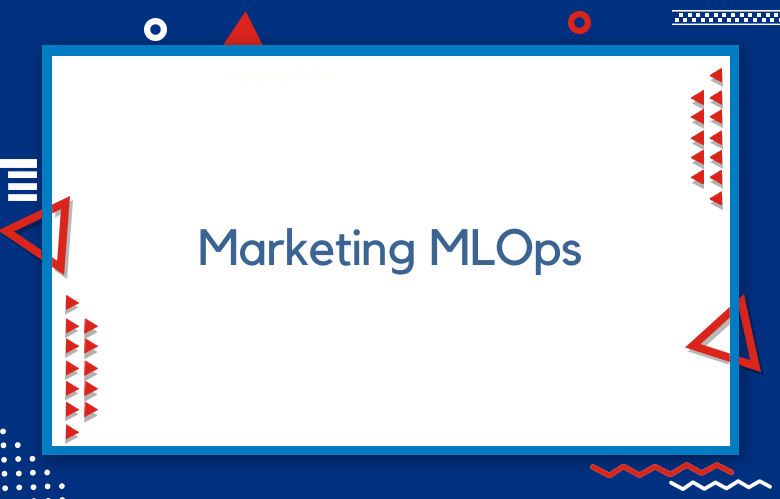Reinforcement Learning to Rank in eCommerce Website on Search Engines

The eCommerce industry is one of the largest industries in the world, with trillions of dollars being spent on products and services every year. With a market this large, it’s no wonder that there are so many people who want to be involved.
Please look at how reinforcement learning can help those looking to rank higher on search engines like Google for their chosen product or service.
Some factors can affect the ranking of a website in search engines. One factor is the relevancy and quality of the content on your site. Another factor is how often you update your content. Many other factors could impact your rank, but one way to improve it is to use reinforcement-based learning algorithms such as Q-learning or A3C (Adaptive actorcritic).
Reinforcement Learning to Rank uses these algorithms for training models based on user feedback from rewarding them with a positive response when they click through links. This helps create an algorithm that will help improve rankings based on what people want and need, ultimately improving customer experience.
Reinforcement Learning is nothing but training an agent, in our case a computer program, by rewarding or punishing it based on its success in achieving goals set by the programmer.
For this system to work efficiently, there must be at least two components: the environment and the agent. The domain provides feedback about whether or not progress toward a goal has been made.
This is done through rewards or punishments that may increase or decrease an agent’s chance of taking specific actions when faced with similar situations again in future iterations.
What does Reinforcement Learning mean?
Reinforcement learning is machine learning, where the agent makes actions based on its performance to maximize a reward.
Reinforcement Learning is the study of how an agent should take actions in an environment to maximize some notion of cumulative reward. This field has roots in Markov Decision Processes, partially observable Markov decision processes, and dynamic programming.
In Reinforcement Learning, agents interact with an environment and receive a reward when they perform actions. They learn through trial and error by trying to maximize the total amount of rewards received over time.
How does Reinforcement Learning work
Reinforcement learning is machine learning that is concerned with how software agents ought to perform actions in an environment to maximize some notion of cumulative reward.
Reinforcement Learning is machine learning that can model complex interactions and environments without explicit instructions.
Reinforcement Learning is when an agent tries different actions and gets a reward based on those actions.
Reinforcement learning is machine learning in which an agent tries to find the correct actions by trial and error.
Why use Reinforcement Learning to rank eCommerce website
One of the main benefits of using reinforcement learning in eCommerce is that it’s scalable. It can be used to rank on different websites and also for cross-domain ranking.
A significant reason you should use reinforcement learning to rank is that it can learn from human feedback.
Tips to make your site more attractive to users using Reinforcement Learning
- Add a site map to help guide visitors around your site
- Make sure all links work and are not broken
- Use images instead of text whenever possible
- Keep the colors on your website bright and engaging
- Make sure your site is easy to navigate
- Add a “Contact Us” page with an email address and phone number
- Include images of people using or enjoying the product you’re selling
- Use social media buttons on your websites, like Facebook, Twitter, YouTube, and LinkedIn
- Offer free shipping for customers to increase sales
- Add a “Contact Us” button to your homepage
- Include a link to your social media accounts on the contact page
- Place images and videos throughout the site that relate to what you are selling or talking about
- Put links to popular articles at the bottom of each article
- Use pictures of people to make your site more personable
- Make sure your text is easy to read and spaced out
- Add a video or audio component to engage visitors on the page
- Allow users to chat with you on the website, such as through an instant messenger
- Offer rewards for completing tasks
- Add a blog to your site
- Include images and videos of the products you are selling
- Create an FAQ page with answers to frequently asked questions
- Use social media for promotion, including Facebook, Twitter, and Instagram
Benefits of Reinforcement Learning to rank
- Reinforcement Learning is machine learning that focuses on finding the best actions to take to maximize rewards.
- It does this by predicting what will happen and determining which action has the highest likelihood of leading to a reward.
- The algorithm begins with random selections but gradually learns from its mistakes and improves its predictions.
- This means it can constantly improve itself over time without human input
- Reinforcement Learning is a machine learning method that can be used to rank on search engines
- The algorithm can learn from its own mistakes and adapt to new information to maximize the reward at each time step
- Reinforcement learning algorithms can outperform traditional methods, such as content-based ranking or collaborative filtering when the goal of the system is not well-defined
- Reinforcement Learning is a form of machine learning that uses feedback from the environment to update its knowledge base
- It has been used in many fields, including robotics and games
- The process starts with an agent interacting with its environment and receiving rewards or punishments for their actions
- If the agent’s performance reaches a certain level, it can be considered reinforcement learning
- Reinforcement learning is a method of machine learning
- It’s based on the idea that an agent can learn from its actions and mistakes to improve future performance
- In reinforcement learning, you give your algorithm feedback about how well it did after each trial to help it learn what works best
- This method is more complex than supervised or unsupervised models but has improved accuracy for some tasks
- Reinforcement Learning is a method of machine learning that focuses on finding the best action given an environment
- It can be used to rank websites, which is easy because it doesn’t require any labeled data
- The goal of reinforcement learning is to find the highest-ranking webpage for a particular query by playing against itself and figuring out how to maximize its rewards as quickly as possible
Challenges with Reinforcement Learning in eCommerce websites
- Reinforcement learning has difficulty with delayed feedback
- Reinforcement learning cannot be used to optimize the entire website or page, but only a single component of it
- Reinforcement learning is not well-suited for optimizing the user’s experience on a particular page
- It is used in many practical applications like eCommerce websites to learn from users’ actions and provide them with better service
- One challenge in reinforcement learning is figuring out how to measure success- it’s challenging to know when you’ve achieved your goal, and there are no clear metrics or goals set up by the company before they start working on their project
- The other problem with reinforcement learning is that it doesn’t work well in situations
- Reinforcement Learning is expensive to implement
- The results of reinforcement learning are not always accurate, and the models can be difficult to debug
- It’s hard for RL models to learn from sparse rewards
- The agent needs to know what it’s being rewarded for
- It isn’t easy to automatically generate rewards because they need to be customized based on the particular task at hand
- Reinforcement Learning is not able to process big data
- The algorithm has a hard time predicting the behavior of human shoppers, which means it can’t make accurate predictions about what products they will buy and when
- It’s difficult for reinforcement learning to learn how to optimize the website layout and product placement because humans are better at determining these things than computers
Key takeaways and how you can implement Reinforcement Learning on your website today!
- Reinforcement Learning is a technique that provides feedback to optimize the performance of an agent
- The reinforcement learning algorithm has two components: the agent and the environment
- An agent interacts with its environment by taking actions and then receives some reward for those actions
- An optimal policy maximizes the total rewards received over time
- reinforcement learning can be applied to websites to increase conversion rates
- The three main steps for implementing reinforcement learning are 1) design the environment, 2) train the agent, and 3) test your agent’s performance
- Steps 4-5 are repeated until you have reached an optimal state
- Reinforcement Learning is a system that learns by trial and error
- It’s the most widely used machine learning algorithm in AI because it has many practical applications, including marketing and customer service
- To implement reinforcement learning on your website, you need an agent with states (the environment) and actions (what the agent does), as well as a reward function that tells the agent how good or bad their last action was
- The agent will then try different combinations of actions until they find one that maximizes their reward
- It predicts what will happen next based on the current state
- The agent takes actions to maximize its reward, which is usually a score or an energy level
- In this context, reinforcement learning can be used to increase website engagement by making changes that optimize the user experience and maximize rewards.
Conclusion:
Reinforcement learning (RL) is a type of machine learning where an agent learns to make decisions by interacting with an environment. The agent receives rewards for performing certain actions, which guide it in learning the best strategies or policies for achieving its goals.
Call: +91 9848321284
Email: [email protected]



